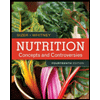4. If the environment gets cold, we will often shiver in order to: A. keep body temperature the same as the external temperature B. increase body temperature C. decrease body temperature D. regulate blood pressure What is the most likely homeostatic response to an increase in environmental temperature? A. Blood vesse! Constriction 5. B. Producing sweat C. Shivering and muscle contraction D. Goose bump formation What could happen due to a failure in homeostasis? A. The accumulation of waste products B. The loss of excess water from the body C. Maintaining excess levels of sugar in the body D. All of the above are potential outcomes of failure of homeostasis. 6. 7. Which of the following is true when the body is under homeostasis? A. The body cannot generate its own heat in very cold conditions B. The body is under dynamic equilibrium C. The body is able to self-sustain without anything from the environment D. None of the o' ve
4. If the environment gets cold, we will often shiver in order to: A. keep body temperature the same as the external temperature B. increase body temperature C. decrease body temperature D. regulate blood pressure What is the most likely homeostatic response to an increase in environmental temperature? A. Blood vesse! Constriction 5. B. Producing sweat C. Shivering and muscle contraction D. Goose bump formation What could happen due to a failure in homeostasis? A. The accumulation of waste products B. The loss of excess water from the body C. Maintaining excess levels of sugar in the body D. All of the above are potential outcomes of failure of homeostasis. 6. 7. Which of the following is true when the body is under homeostasis? A. The body cannot generate its own heat in very cold conditions B. The body is under dynamic equilibrium C. The body is able to self-sustain without anything from the environment D. None of the o' ve
Biology: The Dynamic Science (MindTap Course List)
4th Edition
ISBN:9781305389892
Author:Peter J. Russell, Paul E. Hertz, Beverly McMillan
Publisher:Peter J. Russell, Paul E. Hertz, Beverly McMillan
Chapter38: Introduction To Animal Organization And Physiology
Section: Chapter Questions
Problem 8TYK
Related questions
Question

Transcribed Image Text:4. If the environment gets cold, we will often shiver in order to:
A. keep body temperature the same as the external temperature
B. increase body temperature
C. decrease body temperature
D. regulate blood pressure
What is the most likely homeostatic response to an increase in
environmental temperature?
A. Blood vesse! Constriction
B. Producing sweat
C. Shivering and muscle contraction
D. Goose bump formation
5.
What could happen due to a failure in homeostasis?
A. The accumulation of waste products
B. The loss of excess water from the body
C. Maintaining excess levels of sugar in the body
D. All of the above are potential outcomes of failure of homeostasis.
6.
7. Which of the following is true when the body is under homeostasis?
A. The body cannot generate its own heat in very cold conditions
B. The body is under dynamic equilibrium
C. The body is able to self-sustain without anything from the environment
D. None of the o' ve
*46
Expert Solution
This question has been solved!
Explore an expertly crafted, step-by-step solution for a thorough understanding of key concepts.
This is a popular solution!
Trending now
This is a popular solution!
Step by step
Solved in 3 steps

Knowledge Booster
Learn more about
Need a deep-dive on the concept behind this application? Look no further. Learn more about this topic, biology and related others by exploring similar questions and additional content below.Recommended textbooks for you

Biology: The Dynamic Science (MindTap Course List)
Biology
ISBN:
9781305389892
Author:
Peter J. Russell, Paul E. Hertz, Beverly McMillan
Publisher:
Cengage Learning


Concepts of Biology
Biology
ISBN:
9781938168116
Author:
Samantha Fowler, Rebecca Roush, James Wise
Publisher:
OpenStax College

Biology: The Dynamic Science (MindTap Course List)
Biology
ISBN:
9781305389892
Author:
Peter J. Russell, Paul E. Hertz, Beverly McMillan
Publisher:
Cengage Learning


Concepts of Biology
Biology
ISBN:
9781938168116
Author:
Samantha Fowler, Rebecca Roush, James Wise
Publisher:
OpenStax College

Anatomy & Physiology
Biology
ISBN:
9781938168130
Author:
Kelly A. Young, James A. Wise, Peter DeSaix, Dean H. Kruse, Brandon Poe, Eddie Johnson, Jody E. Johnson, Oksana Korol, J. Gordon Betts, Mark Womble
Publisher:
OpenStax College

Nutrition: Concepts and Controversies - Standalo…
Health & Nutrition
ISBN:
9781305627994
Author:
Frances Sizer, Ellie Whitney
Publisher:
Brooks Cole

Basic Clinical Lab Competencies for Respiratory C…
Nursing
ISBN:
9781285244662
Author:
White
Publisher:
Cengage